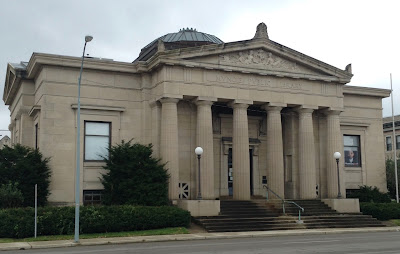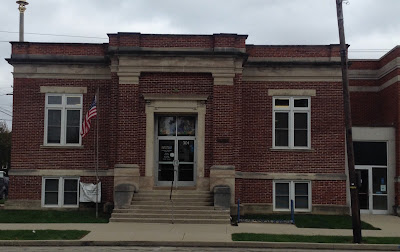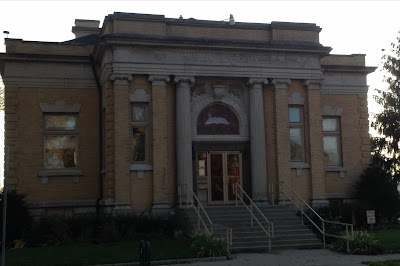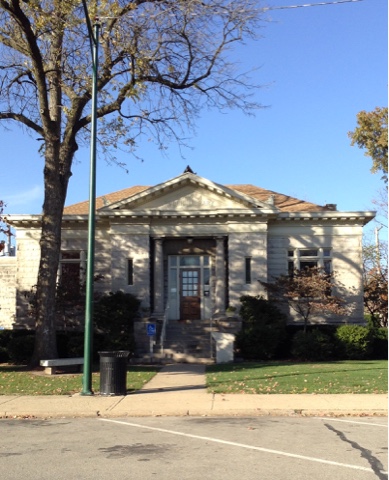Published in the UK by Casseel Illustrated, this coffee-table book is rich with photos and maps, including the routes of the first one hundred races as well as the one to come in 2013. It is prefaced by forewords written by former winners Bernard Hinault and Stephen Roche, each lavishing praise on The Race, but not commentating at all on the fervor and devotion of the fans who line the route and mount decorations and signs all along the way that truly reflect its place in French culture. It's that phenomenal devotion that has drawn me to France the past thirteen summers to ride the route. Their superlatives do though affirm the book's title labeling it not simply the greatest bicycle race, but rather the "world's greatest race" of any kind.
Their commentaries are followed by a brief twenty-two page history of The Race featuring some of its highlights and most prominent personalities. The next two hundred pages are the heart of the book--one hundred two-page spreads on the "one hundred greatest stages" of The Tour. They were very English-speaking-centric--its first excursion to the UK in 1974, the first Brit in Yellow (Simpson in 1962), the first Irish stage win in 1963 (Seamus Elliot), the first North American to don Yellow (Canadien Alex Steida in 1986). Three of the stages were from the 1986 Tour, the first won by a North American--Greg LeMond. Twenty-two other years merited more than one stage, but 1986 was the only year with three stages in this very arbitrary list of the one hundred greatest. Twenty-three of The Races had no stage noteworthy enough to be included.
The descriptions of the stages amounted to just a few paragraphs, an initial brief description of the stage spread across the top of the two-page spread. A map of the stage filled the bottom two-thirds of the spread interlaid with four numbered paragraphs accompanied by a related small photograph that gave a little more detail on what qualified it as one of the greatest stages. There was also a highlighted quote or two and a brief capsule of some set of statistics such as Prologue winners or legendary Pyrennean passes.
The graphics were as integral to the book as its copy, thus explaining why four people were credited as its authors. There were no bios given of them. The two male members had written other books on cycling. Chris Sidwells had written his own book on the history of The Tour released shortly before this called "A Race for Madmen." It was riddled with errors, as if rushed into print to be the first book to hit the shelves for this centenary edition of The Tour.
This book was no less error-free. Rather than the "definitive" book on The Tour, it may well be the most error-plagued book on The Tour. The factual mistakes litter the entire book, from the earliest Tours to more recent Tours that I have personal knowledge of. It states that Hinault attacked LeMond on the climb up L'Alpe d'Huez in 1986. That's not true at all. They rode up it together well ahead of all else. There are even photos of LeMond with his hand on Hinault's back, as if giving him an assist. They crossed the line all smiles beside one another, Hinault just ahead.
It is also gives misinformation on Michael Rasmussen leaving the 2007 Tour when in Yellow. It states his team withdrew him for missed drug tests, when it was because he had falsified his whereabouts documents, claiming to be in Mexico training when he was actually in Italy, to avoid the drug testers who weren't likely to come after him if he were in Meixco. It states Armstrong returned to The Tour in 2009 after a four-year absence, when he had only missed three Tours. The book includes George Hincapie in a list of North Americans who wore the Yellow Jersey. He did win a stage and once was virtual Yellow on the road until the Garmin team chased down the break he was in, but he never laid claim to the jersey, one of the biggest regrets of his career.
Another faulty chart is a list of debutants who won The Tour. It failed to included Eddie Merckx, who won the 1969 Tour in his first attempt and in most dramatic fashion. His stage 17 win in the Pyrenees by eight minutes riding the final 140 kilometers on his own may be the greatest exploit in Tour history and is one of those recounted in the book. Merckx was in Yellow at the time, hardly needing to make such an audacious gesture. At the end of the stage he pronounced, "I am happy to have achieved something that will be remembered, I think." Nothing defined the Cannibal more than this. So what if the book overlooked the fact it was in his first Tour. It was wonderful to read about it again.
The book doesn't list the longest breakaways in Tour history, but falsely mentions that Thierry Marie's 234-kilometer break in 1991 was the second longest ever. Eugene Christophe had one of 315 kilometers in 1912 and Albert Bourton rode on his own for 253 kilometers in 1947. And there could be more.
The book also bungles some of the most seminal moments in Tour history. It states Federico Bahmontes ate an ice cream cone on the summit of the Galibier in the 1954 Tour. This storied event by the great climber, who didn't like to descend, took place at the summit of Romeyere. An event that did take place on the Galibier was the first fatality of a Tour rider due to a crash--Franciso Cepeda in1935. The book, however, falsely places the crash way down on the flats "near Vizelle towards the end of the stage."
Histories often bungle the story of the legendary incident of Eugene Christophe breaking his fork on the Tourmalet in the 1913 Tour. It happened shortly after he began the descent. He had to carry his bike over ten kilometers until he reached a blacksmith shop in the small town of Sainte-Marie-de-Campan where he repaired his fork. This book blames the break on a collision with a car. That story has been fully discredited, made up after the fact to shift the onus from Puegeot, the manufacturer of the bike and sponsor of Christophe.
Riders at the time could not receive any assistance when repairing their bike. Christophe was famously penalized ten minutes for letting a young boy operate a bellows during his repair. This book, as well as Cossins' book on the first Tour, neglect to mention it was reduced to three minutes. The penalty was of no significance, as Christophe lost over three hours due to the repair. The book also makes the unsubstantiated claim that the penalty was levied by Tour director Henri Desgrange, who was generally in Paris supervising the newspaper that sponsored The Race and not on the scene. Since the book is so filled with mistakes, whatever it asserts must be questioned.
It doesn't even always agree with its self. In one place it states sixty riders started the first Tour in 1903 and in another gives a figure of 59. Cossins must not have given the book much of an edit as the subtitle of his book on the first Tour is "60 cyclists and 19 days of daring on the road to Paris." The book gets the facts wrong on the second Tour as well, stating it was five months after it finished that the first four finishers were disqualified for cheating, when it was actually four months. Another minor mistake is giving Odile Defraye the age of 20 when he won the 1912 Tour and also referring to it as his first Tour. He was 24 at the time and he had previously ridden the 1909 Tour.
The book may have been rushed to print before a proper authority could fact-check it, but there was at least a minimum of typos. The only one I noticed was giving the year as 1997 when Freddie Maertens won an astounding thirteen stages while romping to victory in the 1977 Vuelta.
The authors do not explain how Paris could be a finish town 135 times, when there had only been 100 Tours. Scanning the maps of all the Tours does not show it being used multiple times in a Tour. The first nineteen Tours all started and ended in Paris. In 1926 it started in Evian and ended in Paris. The next eighteen editions returned to the Paris-Paris format, but starting in 1951 every start took place elsewhere until the 2003 Tour celebrating its one hundred year anniversary, repeating its start in the Paris suburb of Montgeron and including all six Ville Ètapes from that initial Tour. So even if that 135 figure was meant to mean Ville Ètape, including both finishes and starts, the figure comes to 138.
The Tour is so rich in astounding exploits and lore, interlaced with French history, culture and geography, it is endlessly fascinating. Even books that get so much wrong, even labeling themselves as "definitive," are still a pleasure. Keep 'em coming.




































